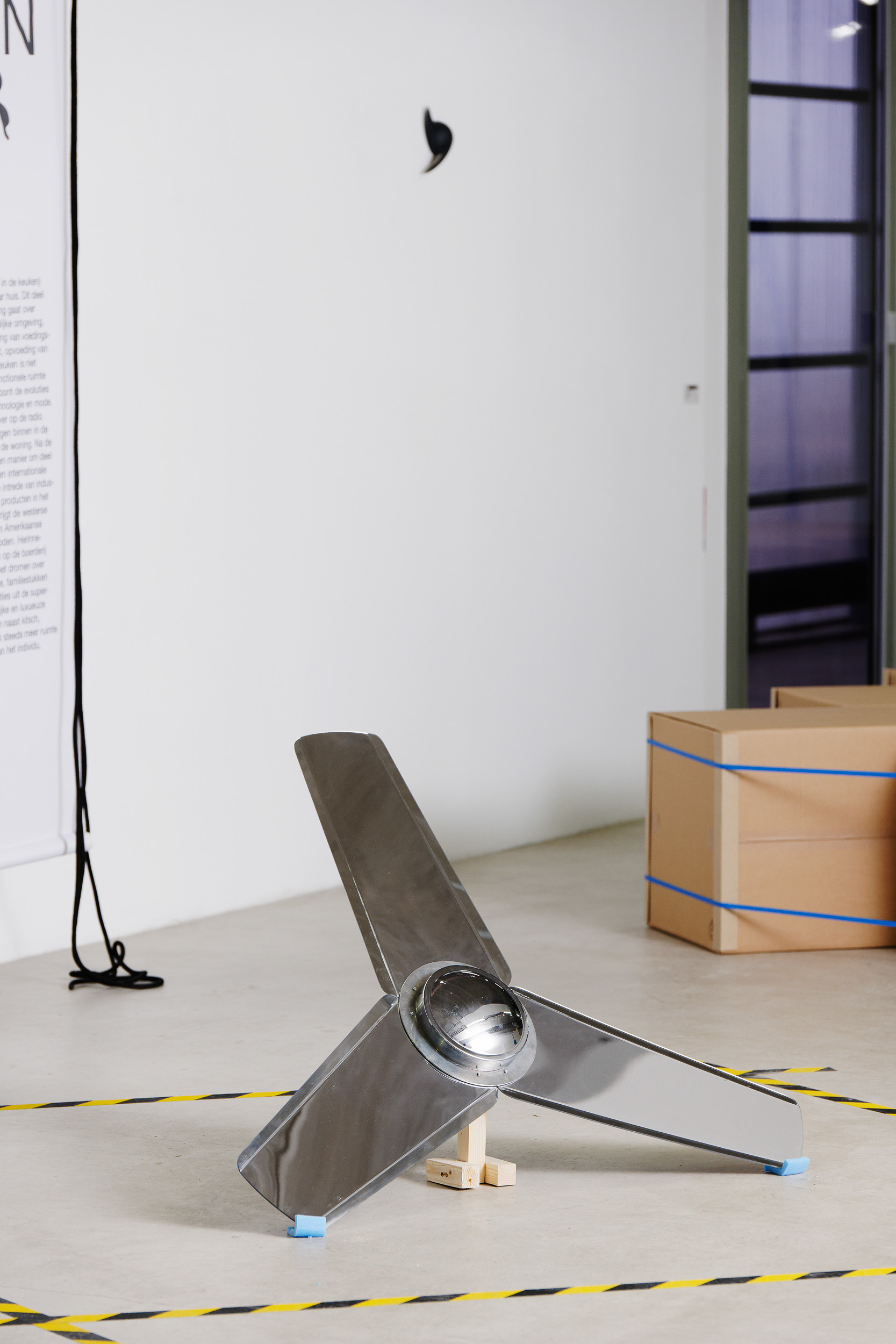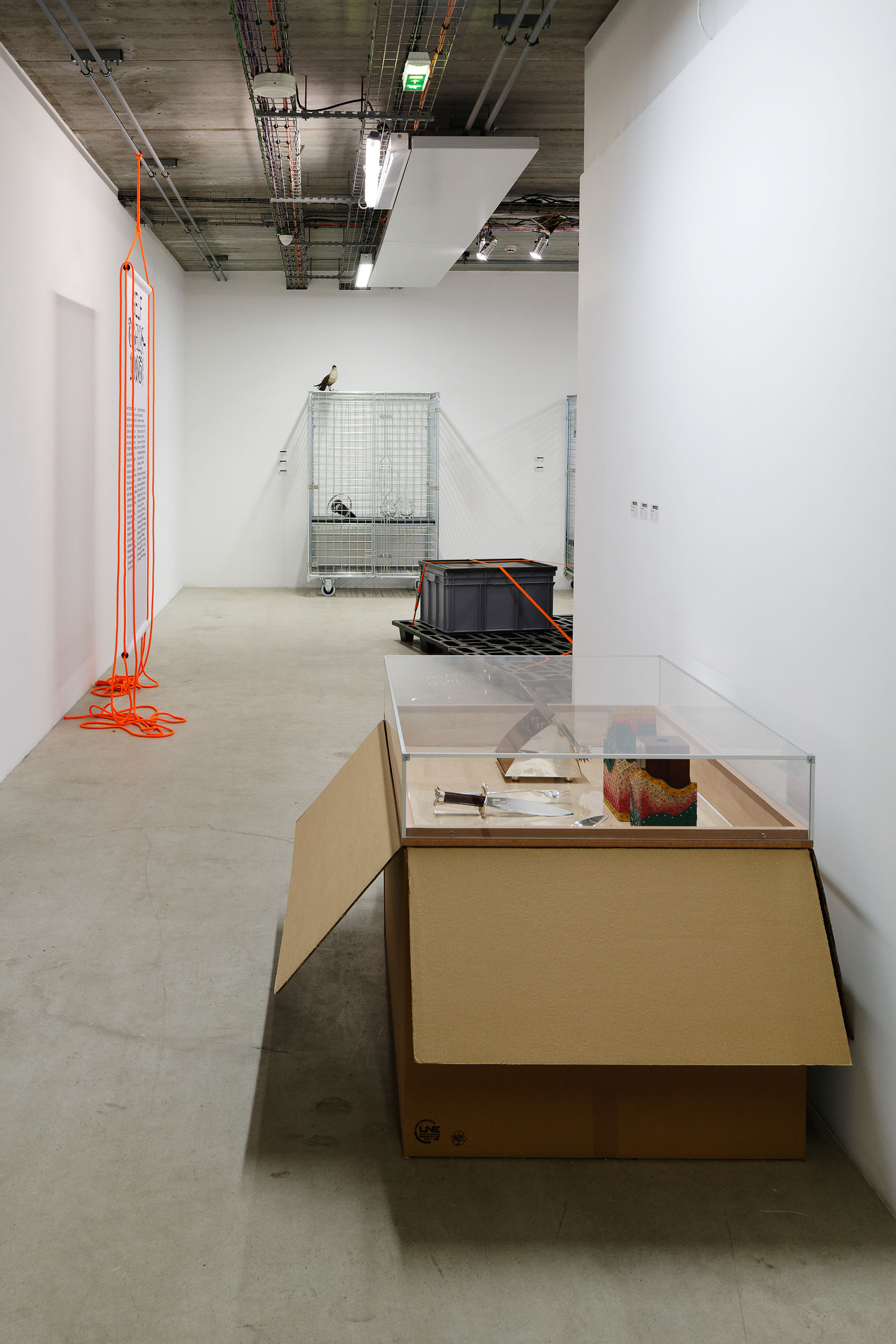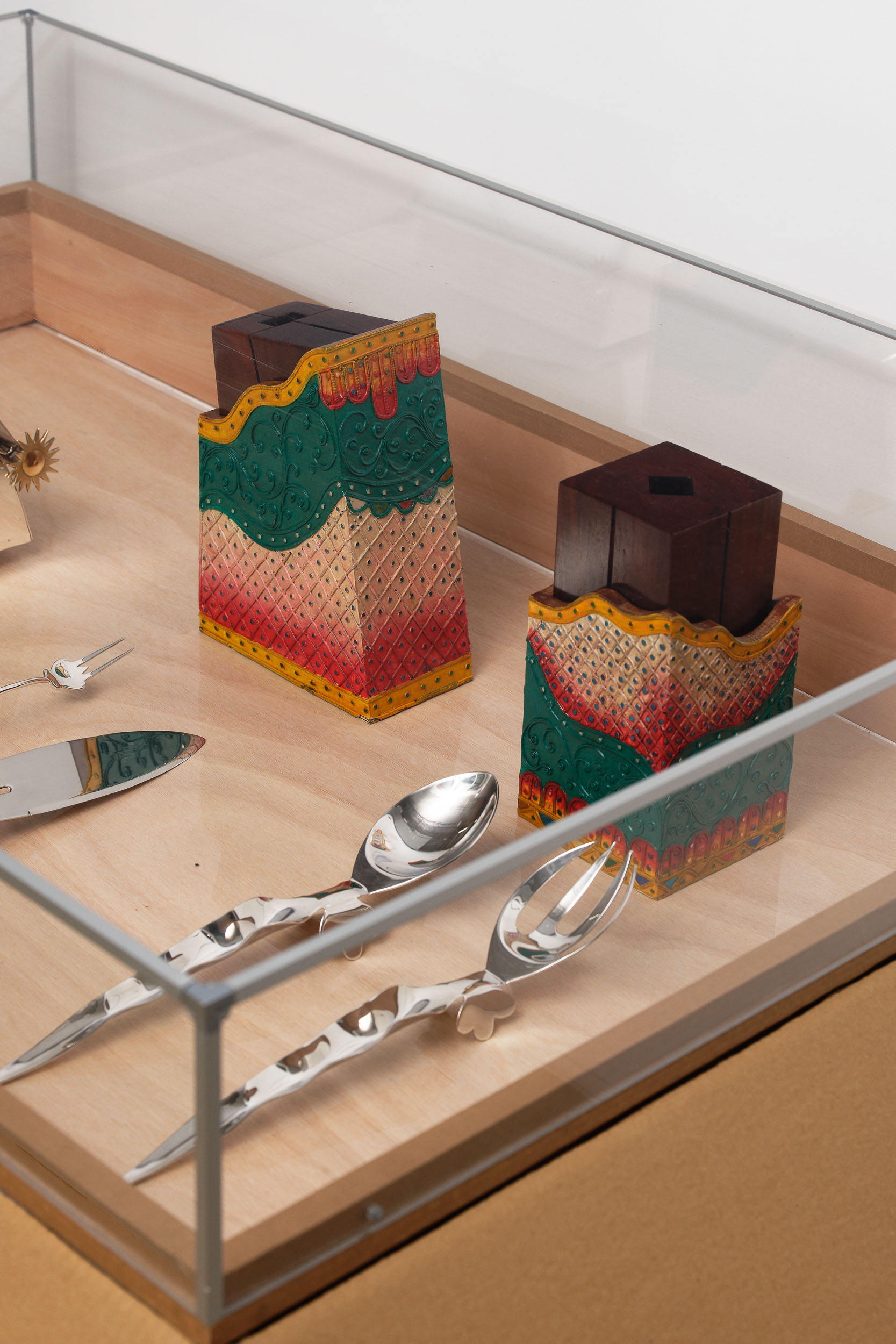Year: 2022
Curation: Mathilde Sauzet
Location: FRAC Grand-Large, Dunkirk, France
Exhibited collections: FRAC Grand-Large and Design Museum Gent
Handmade nets: Ateliers Delacroix
Graphic design: Vincent Gebel
Photographs: Aurélien Mole
Vidéo: Dimitri Galitzine
The Ship of Fools exhibition space has been designed as a transit zone, a sorting centre where objects and works meet for a moment in time, that of the exhibition, before being dispersed again.
The plastic vocabulary is based on freight. And it also involves unpacking, the inventory of a collection placed in an order according to its narrative potential, as opposed to the norms of classification usually applied to objects.
The choice was made not to glorify the objects by transforming their status through museological artifices but instead to allow visitors to freely appreciate them, as they are.
In order not to produce more, ready-made devices supplied to or found in the Frac's reserves have been used in the organisation of the space. Ateliers Delacroix's traditional nets are the only elements that have been specially made for the event. Dotted around the exhibition, they are an extension of the marine imagery present in the works, and serve to organise the objects and keep the viewers and their gaze at a distance.

An exhibition curated by Mathilde Sauzet with designer Julien Carretero
In this fictional tale of a miraculous draught of fishes on the seventh continent, Ship of Fools: Objects as Partners in Transport brings together various odd objects from the Design Museum Gent collection, together with a selection of films and other works by artists. The exhibition focuses on the transport craze – the steadily evolving mobility of objects, materials and people – from the 1950s up to the present day. A contemporary echo of Hieronymus Bosch’s late-medieval Ship of Fools, the Frac Grand Large event depicts the possible end of our opulently materialistic societies. Sacrifice or rescue?


Transport: Loss of meaning and vital quest
Let’s consider an act of madness particular to humans: a yearning for transport. This frenzied desire for exoticism, weekends away, trips, export objects, and the frantic pace of our everyday lives, the sancti-fication of cars, aeroplanes, and rockets.
Originally the notion of “transport” was associated with strong emotion. The amorous transports of medieval literature called on the potent desires of courtly love, the magnetism of the muses and troubadours, the passionate feelings behind heroic sagas. Later, around 1650, “transports of the brain” described the hysteria and delirium caused by fever. Transport incarnates a disrupted state of being, far beyond displacement. Scarcity of fuel, mass migration, epidemics, border closures: what we are actually facing is a displacement crisis. Should our transport needs be called into question? The passengers of the Ship of Fools are eating, playing and singing; a feeling of unease emerges from their trance. Over the centuries, the story of this boat has continued to signal a loss of meaning and new vital quests.





The Middle Ages according to Bosch and Brandt
The painting by Dutchman Hieronymus Bosch and the text by the German humanist and poet Sebas-ian Brandt that this exhibition refers to are both called Ship of Fools. Dating from around 1500, they conjure up a period of transition towards a new society: the passage from the Middle Ages to the Renaissance, a period of crisis and of moral, social and aesthetic break-down. In Bosch’s picture the ship stands for a means of escape in the tradition of such parables of the Flood as Noah’s Ark. In a makeshift boat, a handful of alienated men and women set sail in the hope of a miracle or another reality. The story of the Ship of Fools represents both a way out and an imprisonment.
In the Middle Ages madness was an admissible subject for painting: Bosch, for example, devoted a number of pictures to human derangement. At a time when religion was losing its hegemony owing, among other things,
to scientific advances, pagan and vernacular beliefs were multiplying and giving rise to fantastic imaginings and anguish with regard to the underworld. In Bosch’s landscapes, angels rub shoulders with chimeras, sea monsters and spectres; in the midst of this disorder, humans must find the meaning of their passage on Earth. Now in the Louvre, Bosch’s Ship of Fools has been reproduced on a flag at the Frac Grand Large; the ship’s spirit will float through the exhibition like a ghost.

















